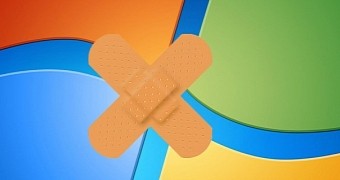It’s a well-known fact that installing Patch Tuesday updates just after their release is a risky business, mostly because many of the bulletins that Microsoft has rolled out lately have proved to be broken and actually caused a lot of trouble for Windows computers across the world.
Statistics provided by Thierry Paquay, a manager on Microsoft's Customer Experience Engineering team, at Ignite (via ZDNet), reveal that Redmond is well aware of the fact that some of its updates need to be re-released to actually fix the issues they’re supposed to fix and to solve the problems that they could cause after being installed.
Last year, 87 percent of the updates aimed at Windows and Internet Explorer were successful, Paquay said, which means that they installed fine from the very first attempt, so no re-release was needed.
In other words, 13 percent of them actually failed to deploy correctly, and thus the company had to look into them and release second versions or fixes to address the problems that they might have caused.
85 updates released in 2014
Microsoft hasn’t revealed the total count of updates for Windows and Internet Explorer in 2014, but Wolfgang Kandek, CTO of Qualys, says that, overall, the company rolled out a total of 85 bulletins last year, down from 106 in 2013 and 100 in 2011.
“Counting both Microsoft and Adobe we had 24 bulletins that acknowledged that vulnerabilities were publicly known before a patch could be delivered. Further we saw Internet Explorer under intense scrutiny by security researchers leading to a large number of addressed CVEs, an effect which has only recently slowed down with Microsoft’s changes to the memory allocation process in IE,” he explained.
While there are no separate statistics on the number of Windows and IE updates, if we use Kandek’s count, it means that 11 bulletins released by Microsoft in 2014 might have caused issues on Windows computers. Furthermore, this leads to approximately 1 botched update every month, but only if the aforementioned figures are exclusively aimed at Windows and Internet Explorer.
This could change in Windows 10, however, as Microsoft is planning to release new update systems that would reduce the possibility of getting a botched update and allow enterprises to choose the devices and the updates they wish to install first.

 14 DAY TRIAL //
14 DAY TRIAL //